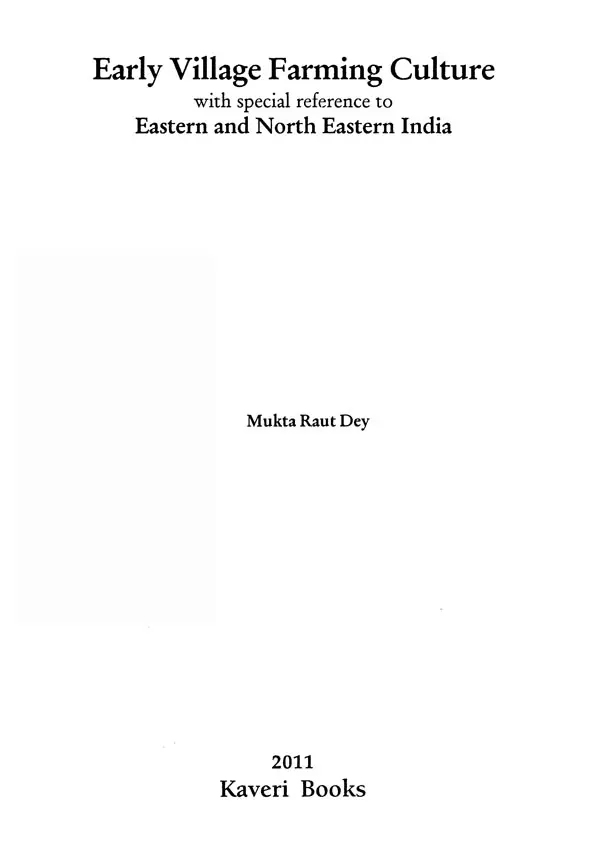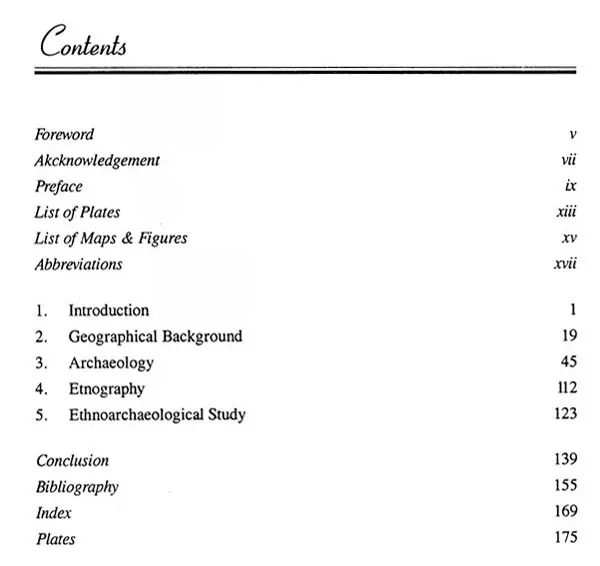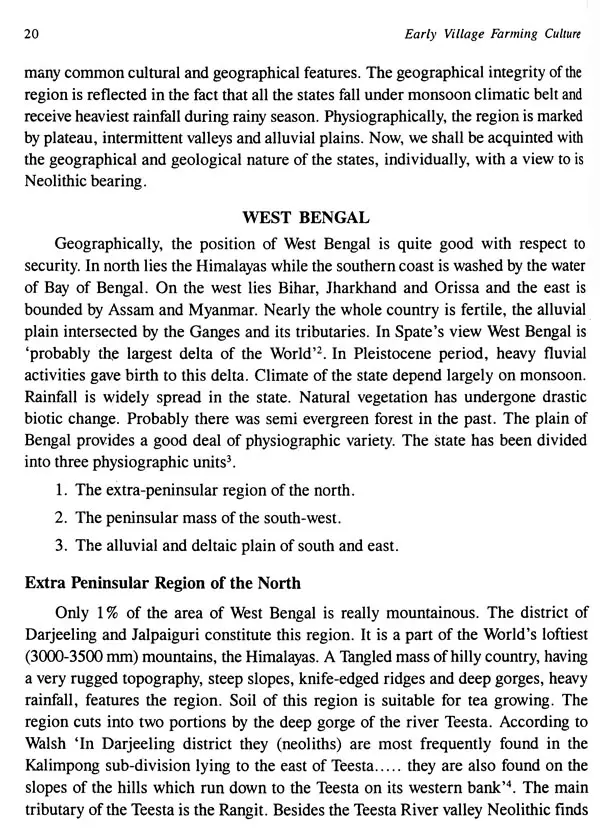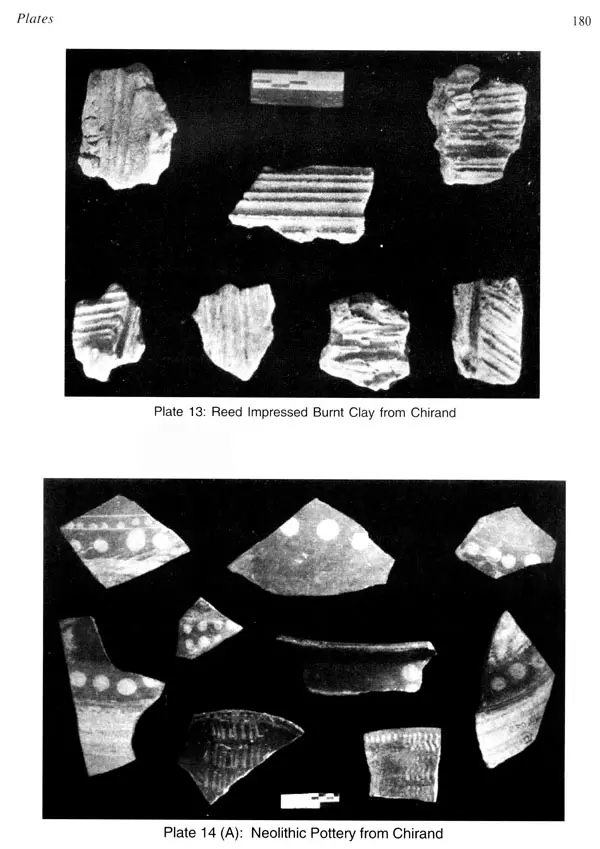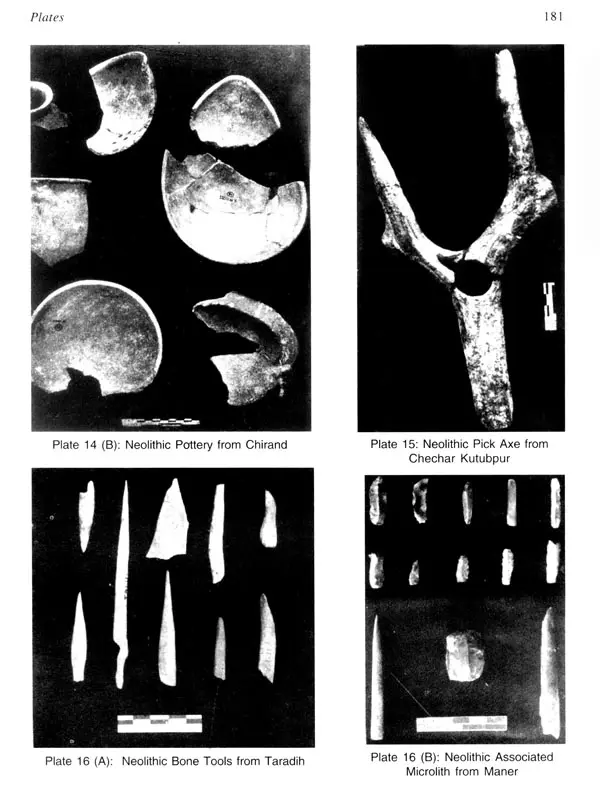About the Book Early village farming cultural phase is a significant chapter of world archaeology. In India, recent discoveries and researches have contributed significantly towards the development of knowledge about this momentous cultural interlude. The present work is concentrated on early village farming culture of hitherto less known area of eastern and north eastern part of this subcontinent.
Developed from an ethno archaeological approach, the book Early Village Farming Culture, focused on Neolithic (as it is popularly known) cultural pattern of the states of West Bengal, Bihar, Jharkhand, Orissa, Assam, Meghalaya, Arunachal Pradesh, Manipur, Mizoram, Tripura and Nagaland. This volume vividly documented Neolithic cultural remains of each and every reported sites of this vast area, however stray its occurrence may be. These dumb remains are further corroborated with relevant ethnographic accounts to reconstruct different facets of the culture in discussion. Every available resource that ranges from material culture to religion is scanned in the light of ancient cultural remains or traditions survived among present day tribal folks to deduce considerable understanding of this crucial phase of human history. Hopefully this challenging Endeavour of the author, to give a better shape to Neolithic culture of the region, will prove itself to be a thought provoking work in generating academic interest and inspiration to pursue more such ventures for the development of Indian archaeology.
About the Author Dr. Mute Raut Dey (b.1968) holds a brilliant academic career with 1st class throughout. She has been selected both by the University of Cambridge and UGC for undertaking doctoral studies, but preferred later and obtained Ph.D degree from University of Calcutta. She is recipient of UGC NET Junior and Senior Research Fellowship, Anthropological Survey of India Senior Research Fellowship, ICHR Post Doctoral Fellowship etc. She is in the panel of lecturer in the University of Delhi. Presently attached with the Indian Archaeological Society, New Delhi, the author is credited with publication of many articles and reviews in reputed journals and presented papers in national and international conferences.
Foreword Neocolithic stage of India vis-a-vis of East and North East India has not been so far given a complete documentation. In this respect Dr. Mukta Raut Dey has made an attempt at reconstructing the early village farming cultures of East and North East India in a well researched manner. In fact this is an outcome of her Ph. D. work. Neolithic in Indian context is mainly substantiated by secondary data, such as, pottery, tool types and their production technology in most of the regions. Excepting Ganga valley, hardly anywhere the Neolithic sites have yielded remains of cultivated cereals. In Eastern India the sites, which yielded remains of rice are quite late in date. Several attempts had been made earlier by the Botanists as well as Anthropologists to point out the place of origin of rice in eastern India in the Jeypur tracts of the state of Orissa. This was done mainly on the basis of preponderance of wild varieties of rice present in this area and the presence of species of Oryza, which could be ancestral to the cultivated species Oryza sativa.
In both the states of East and North East India rice is the staple crop. This area is witness to diverse system of cropping. It ranges from shifting, terrace and to flat land cultivation. Each system has got its own mechanism and technique. Though shifting cultivation is considered as a primitive one, it involves elaborate understanding of the environmental potentiality. Terrace cultivation in the North east is a phenomenon in itself. The example of the Apatanis may be given. This tribe of Arunachal Pradesh has excelled in terrace cultivation.
Preface The term Early Village Farming encompasses the beginning of farming to the emergence of metal. Here, in this dissertation, the earliest phase of this Early Village Farming Culture which is popularly known as 'Neolithic' culture would be dealt with and I would like to adhere to this most accepted term 'Neolithic' hereafter. in this book. The term 'Neolithic' could be interpreted in two ways-traditionally it is symbolized by the occurrence of ground and polished stone tools, celt, ring stone, bolas, handmade pottery as well as mud houses with domesticated economy. The other facet of the said culture refers to economy as well as issues of social formation which is not often represented in archaeologically retrieved data and one has to look at possibilities of work logistics and the like that is a prerequisite of a labor intensive economy.
An effective village-farming way of life had been achieved in certain portions of South-Western Asia by at least 7000 B.C.E. The level of nascent food producing is best reflected in the archaeological materials of the Neptunian group in Palestine Syro-Lebanese littoral and parts of its hinterland, and by the Karim Shahir group in Iraqi and Iranian Kurdistan. In India, knowledge of the development stages that lead to an early village farming settlement is still not complete.
Introduction 'Neolithic India included discussion on important issues. true that archaeological methods do adequate insight into those activities and thought processes which specific then these considerations are great importance and be denied. The attempts elucidate process development momentous change in human cultural history by way including an anthropological insight with ecospecific the various shades development Neolithic in India, for instance durum wheat the millet in the south rice the even adopting method cultivation in further The variation these can lead to change logistics, settlement pattern consequently also ideology. It needless emphasize that understanding a structure alone help understand choice or choices community makes.
Book's Contents and Sample Pages
